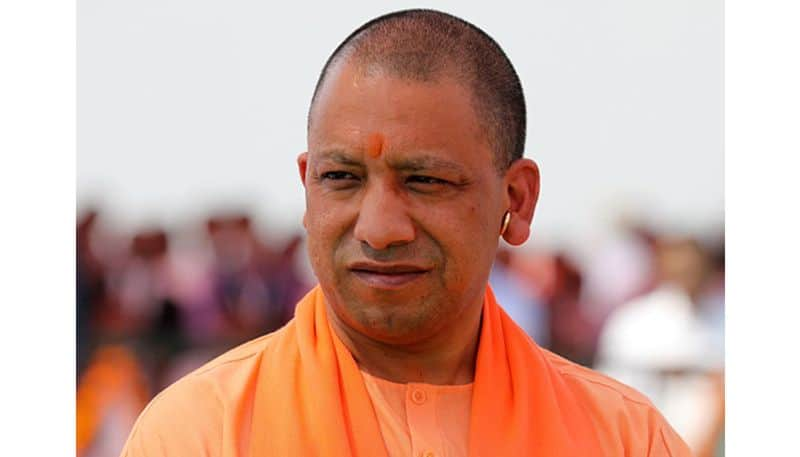One can trace numerous instances from across countries, where names of geographies have been changed particularly by those oppressed by foreign invasions and colonisation. NewYork was once New Amsterdam, Guangzhou was Canton, Beijing was Peking. There are hundreds of renamed cities
UP CM Yogi Adityanath’s renaming of public places and cities is the newest outrage among self-proclaimed liberals, who are quick to cite international examples for anything good. Ironically, renaming of the cities, districts, towns, villages and streets is fairly global, and not peculiar to India.
One can trace numerous instances from across countries, where names of geographies have been changed particularly by those oppressed by foreign invasions and colonisation. NewYork was once New Amsterdam, Guangzhou was Canton, Beijing was Peking. There are hundreds of renamed cities.
Many countries have acquired new names or have reclaimed their ancient names, our neighbours Sri Lanka and Myanmar being closest examples.
Out of past’s shadow
The renaming process is not an exercise to showcase power but often a move to shift from the shadows of the past and assert the nation's true history. In India, the push to rename began immediately after Independence. Though it has been a slow process, marred with politics, it has been a much needed one. The snail's pace has also led to anger, agitations and poll promises.
One of the first events along these lines was a demand to change India's name to Bharat. On Nov 15, 1948, Professor & Member of Constituent Assembly from UP, Shibbanlal Saksena, suggested that Clause I of Article 1 of the Constitution should state, "The name of the Union shall be BHARAT" instead of “India, that is Bharat, shall be Union of States”.
In 1949, President Prasad put to vote HV Kamath's new amendment proposing that "Bharat or, in the English language, India, shall be a Union of States." in the constituent Assembly. Kamath’s amendment lost 38:51. After nearly 2 years, in the second half of 1949, India's name as it is, was approved. This was followed by governments taking the initiative to modify and bring about slight respelling of names of those cities which had been modified to suit the British English dialect like Umbala to Ambala, Kanpur from Cawnpore, Simla to Shimla, Jubbulpore to Jabalpur.
Then came the move to restore original indigenous names like Baroda to Vadodara, Banaras to Varanasi, Waltair to Visakhapatnam, Cochin to Kochi. Among the most notable name changes included the cities of Bombay, Calcutta and Madras which became Mumbai, Kolkata and Chennai respectively. All of these changes happened predominantly under the banner of the Congress government's in power.
Congress’s renaming spree
Even as recently as 2014, under the Congress rule in Karnataka, CM Siddaramaiah announced changes in names of 12 cities en masse.
Bangalore to Bengaluru
Belgaum to Belagavi
Bellary to Ballari
Bijapur to Vijapura
Chikmagalur to Chikkamagaluru
Gulbarga to Kalaburgi
Hospet to Hosapete
Hubli to Hubballi
Mangalore to Mangaluru
Mysore to Mysuru
Shimoga to Shivamogga
Tumkur to Tumakuru
As observed above, almost all the examples mentioned, be it respellings or name restorations, have one thing in common; the places renamed were christened by the British rulers. Most of the names carried no meaning or history but were simply anglicized version of the original name for the convenience of the colonial masters. Let us consider Mumbai as an example. The name Mumbai has its roots in the city’s protector and goddess, Mumba Devi; however, Mumbai became Bombay under the British Raj.
Where was the outrage?
Interestingly, there is one observation that cannot be denied. Even with changing of names being common place since long, there was never this kind of high-decibel outrage about the alleged attempts by the governments saffronising the country. It was accepted that the name changes from British era were non-threatening and hence, the outrage was limited. But once the names of the cities marked by islamic invasion were changed, the tempo of outrage and accusations has magnified. The reason behind it is that, our eminent historians, patronized by the ruling parties, most importantly the Congress, have successfully created an impression throughout the country that India was oppressed only during the British rule.
These historians who perpetuated the myth of the Aryan Invasion Theory, also distorted the history of Islamic invasion, oppression, and their barbaric rule. The destruction of Hindu identity marked by desecration of temples and forceful conversions have been sanitized and often erased. We were told and continue to be told about the history with a sizeable amount of sugar coating. While our textbooks, rather correctly, proffer that British were oppressive and cruel, the various Islamic rulers are showcased as great monarchs who brought rich art, music and cuisine to this rather poor land called India.
This narrative cannot be more insincere. The pseudo-secular propaganda and politics of Muslim appeasement, pioneered by the first family of the Congress party, demanded that the history of Islamic invasion be presented with glorification while eclipsing the real facts. The leftist historians carried out this responsibility with zeal, and a great amount of fiction was incorporated into our history.
While sidelining Indian warriors who fought the Islamic onslaught, such as Maharana Pratap and Shivaji, barbaric rulers like Tipu Sultan were depicted as flag bearers of peace, equality and culture. This systematic adulteration of history was carried forward by state sponsored democratic institutions and other political parties which now fall under the umbrella of ‘secular parties’. Academic subversion of real Indian history has led to impairing the thought process amongst Indians.
Worshipping false gods
This kind of politics reached dizzying heights when the Karnataka Congress government in 2015 decided to celebrate the birth anniversary of Tipu Sultan, one of the most barbaric rulers that the subcontinent had ever been terrorised under. His atrocities included killing and converting lakhs of Hindus & Christians; however, we were fed an image of a glorified hero, not only in our books but also in a serial titled ‘The Sword of Tipu Sultan’ on a government-run channel!
Truth, however bitter for some, has to be told. For 70 odd years, we were only fed the convenient truth swarming in an ocean of lies. In the recent years, a new wave of nationalism has been sweeping the country with bold leaders like PM Narendra Modi and UP CM Yogi Adityanath at the helm of affairs. For a nation that longed to correct mere anglicization of names, and for a nation that wholeheartedly welcomed the process of coming out of a massive colonial hangover, it is only natural to desire to erase the names which remind us of the most painful era of our long existence.
The backlash is not unexpected. The opposition parties, who were in power for decades, and the leftist historians, journalists and columnists who once cheered them on, are now rushing to find communal motive behind the renaming process. If changing the names of British era was not communal, the course correction of pre-British era nomenclature cannot be communal either. Those who were silent when Bombay and Calcutta were becoming Mumbai and Kolkata, have no business objecting to Faizabad becoming Ayodhya or Allahabad becoming Prayagraj again. Renaming will not only bring back lost names but also remind us of India's splendid past, but most importantly, it will symbolically do justice to those cities and streets, which for centuries, had to bear the names given by those who misruled them.
What’s in a name, you ask? Seems like a hell lot!
Co-authored by Ganesh Prasad
Last Updated Nov 18, 2018, 1:47 PM IST











![Salman Khan sets stage on fire for Anant Ambani, Radhika Merchant pre-wedding festivities [WATCH] ATG](https://static-ai.asianetnews.com/images/01hr1hh8y86gvb4kbqgnyhc0w0/whatsapp-image-2024-03-03-at-12-24-37-pm_100x60xt.jpg)
![Pregnant Deepika Padukone dances with Ranveer Singh at Anant Ambani, Radhika Merchant pre-wedding bash [WATCH] ATG](https://static-ai.asianetnews.com/images/01hr1ffyd3nzqzgm6ba0k87vr8/whatsapp-image-2024-03-03-at-11-45-35-am_100x60xt.jpg)



